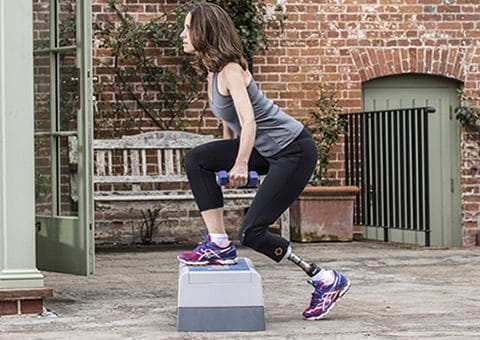Improved gait performance
- Faster self-selected walking speed2,6-9
Improved ground compliance when walking on slopes
- Increased plantarflexion peak during level walking, fast level walking and cambered walking10
- Increased dorsiflexion peak during level walking, fast level walking and cambered walking10
Less of a prosthetic “dead spot” during gait
- Reduced aggregate negative COP displacement7
- Centre-of-pressure passes anterior to the shank statistically significantly earlier in stance7
- Increased minimum instantaneous COM velocity during prosthetic-limb single support phase7
- Reduced peak negative COP velocity9
- Reduced COP posterior travel distance9
Improved ground compliance when walking on slopes
- Increased plantarflexion range during slope descent3
- Increased dorsiflexion range during slope ascent3
Less effort on residual hip for trans-femoral amputees on varied terrains
- Reduced the mean hip extension and flexion moments11
Effects consistent over time
- Same gait variable changes in two gait lab sessions one year apart6
- Magnitude of changes comparable between sessions6
Brake mode during slope descent to control momentum build up
- Reduced mean prosthetic shank angular velocity in single support12
- Increased Unified Deformable Segment (prosthetic ‘ankle’) negative work12
Less gait compensation movements during slope descent
- Reduced residual knee flexion at loading response12













